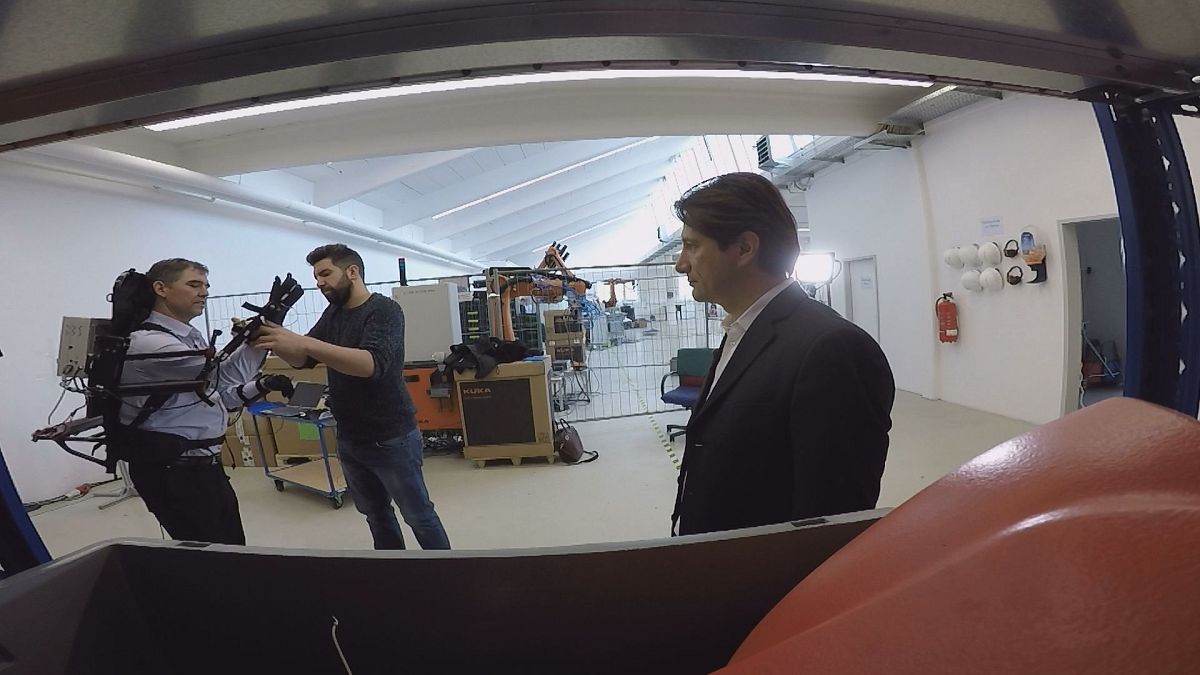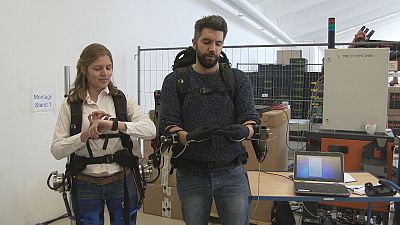Robo-Mate looks like a superhero accessory, but actually it is a tool designed to help industrial workers.
Robo-Mate looks like a superhero accessory, but actually it is a tool designed to help industrial workers.
It can reduce the effort to lift a load by ten times. It is able to reduce the effort needed to lift a load and protects the spine from heavy lifting and sudden movements.
You don’t have to become a cyborg to stay safe when it comes to manual handling. However, over 25 percent of Europeans experience back injuries at work – a statistic that has inspired Robo-Mate, a project that aims to give workers a tool to decrease physical stress and risks associated with heavy lifting.
“This technology allows us back injuries, it allows us to move in different directions all day long, and in the end it gives to men and women opportunities to work in difficult tasks equally,” said Maja Hadziselimovic,
software specialist, GBS
Twelve partners from seven European countries have joined this EU-funded project, geared mainly towards industrial applications.
In Augsburg, Germany, the technical teams are at the final stages in the development of the Robo-Mate technology.
It is not just industrial workers who need help with heavy lifting. New developments will focus on expanding the range of end users.
“For example in the logistics sector, at airports, baggage handling, there is a great need,” said Heiligensetzer. “Or in the medical sector, taking care of elderly people, nurses who have to lift heavy patients would be happy with a Robo-Mate system.”
The Italian Institute of Technology (ITT) has been involved in the final Robo-Mate trunk prototype in the areas of comfort, weight and motion control.
Having stronger arms is not much use if the worker struggles to handle the load. The device needs to feel comfortable after hours of work.
“One of the most complicated areas of the system is to making it easy and conformable to wear, not too heavy. In this way the user will be satisfied and he will feel that it [the exoskleleton] is helpful,” said Jesús Ortiz, Research Technologist, IIT.
To get a lighter exoskeleton, developers have worked to find solutions for every component. In the end they found inspiration in the traditional backpack.
“Within the project, I think that the most challenging aspect has been making the system as light as possible,” Jorge Fernández García-Llera,
Mechanical Designer, IIT, told Euronews. “Usually we use standard components like the backpacks used by Sherpas for instance which are designed to carry heavy loads but, at the same time, they are comfortable.”
A solution to having reliable control of the exoskeleton’s force comes from the medical sector – a procedure, largely used in biomechanics, based on the evaluation of the electrical activity produced by skeletal muscles.
“The technique we use is the surface electromyography,” said Stefano Toxiri, Biomedical Engineer, IIT. “We put one electrode on the skin, which reads the activity of underlying muscles. These signals are processed and then we get the necessary information: the intensity of the force needed by the user, at a specific moment, that will be provided by the exoskeleton.”
More improvements need to be made before the Robo-Mate exoskeleton becomes an everyday presence in European factories.
The next step for developers is to have workers accept this device as a common tool of the trade, rather than a kind of superhero accessory.
Further reading:
Robo-Mate: from brain muscle gathering to heavy weight lifting




